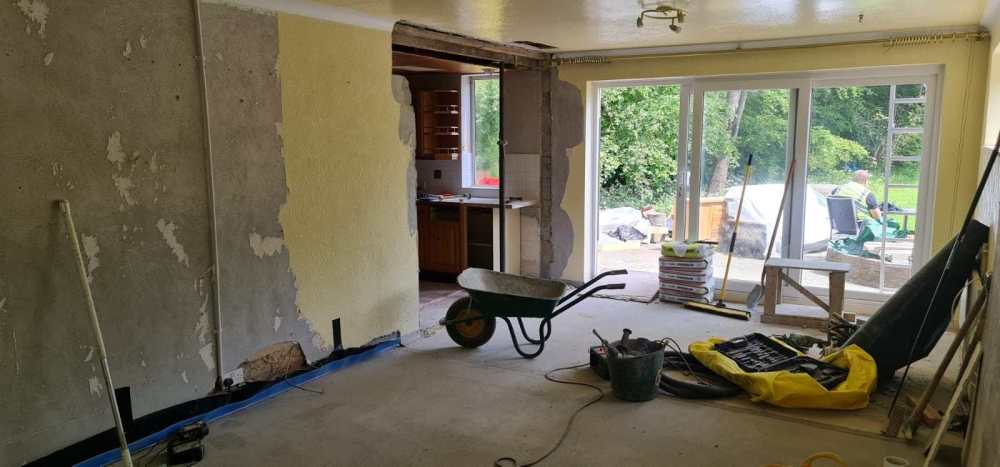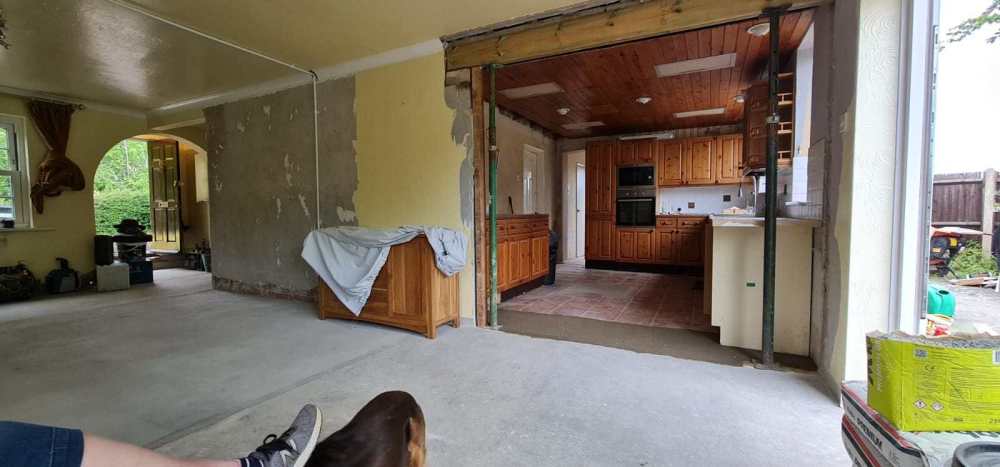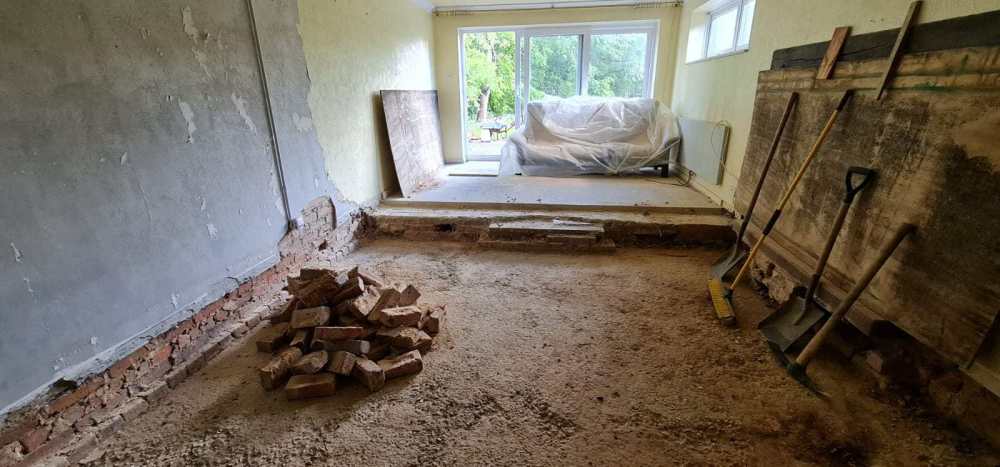Leaderboard
Popular Content
Showing content with the highest reputation on 02/25/25 in all areas
-
I should probably start a blog for this sort of thing, but I just wanted to let y'all know that we finally got planning permission - 4.5 years after buying the site, after one application with a committee hearing, and the latest application that took nine months to determine. Thanks to everyone on here for their help, advice, and nudges on expectation alignment!12 points
-
3 points
-
2 points
-
Hi All Im Brent, Ive just joined and the Admin asked me to introduce myself. Im looking for advice on being a small home developer, if I can be pointed in the right direction I would sincerely appreciate it Much Obliged Brent2 points
-
Technically, your Planning approval is invalid and you should liaise with the LPA in order to find the best way forward.2 points
-
+1 I think I would just keep quiet about it unless enforcement bring it up. Ask forgiveness etc.2 points
-
Good point Nick. To add a bit. If you nip down to you local B&Q and look at the floor slab you see what we call tied (call these sawn joints) joints at 4 - 6 m spacing. About every 18m you'll see a movement joint, tends to have metal armour each side with a big bead of mastic. B & Q slabs are mostly ground bearing slabs, no rafts. As an aside when I'm designing pallat racking systems we try as best we can not to sit the legs straddling the primary movement joints. Ok so 140 m sq. Say it was a rectangle 9.5 x 15 m ~ 142m sq. You could probably do this as a ground bearing slab with a few sawn joints or non at all if you up the anticrack mesh density. If well laid and cured.. looked after then with a screed on top then it can work as you point out. I'm cautious as while it worked for you on that site it won't apply to all slabs. You make a good point about intermediate and ring beams. These if not detailed and understood properly can tend to lock the slab edges and say the middle in position. This locking effect increases the shrinkage stress in the slab that cause trouble cracking wise. It's a great job as self building and renovations for example test you skills, for me the more I learn the more I realise how much I don't know! Indeed. We may have a fair bit in common. I was a local building Contractor for 20 years before trucking off to Uni to become a Structural Engineer and Designer. It's almost a natural progression for those of us who enjoy their job. You build stuff following other folks designs, realise you can do better at times, learn, improve and implement.1 point
-
I can talk of similar experience, 465m² raft without any expansion gaps. 100mm thick, single layer of light weight mesh and UFH pipes set within that 100mm depth (no screed), increasing to 300mm deep x 500mm wide integral ring beam around the periphery. Seamless resin floor finish across around 275m² and tiles elsewhere without a sign of any movement. Although with a thermal expansion coefficient of 0.00001/°C I'd not really expect it to move that much. I see a temp swing of 18°C to 22°C of the floor across the year which would equate to about a 1mm change across its 26.5m width.1 point
-
Very kind words @Big Jimbo, like many on here been a labour of love. Living off site, only working on it at weekends, kids, dogs blah blah.1 point
-
1 point
-
We used Greencoat, that was based on the cost of Zinc at the time and the installer saying we'd never know the difference once it was installed. He said one of the main issues with zinc is due to its softness hence you tend to get more oil canning with it especially over large uniform areas. So he tended to use it more on complicated jobs with lots of detailing e.g. bandstand roofs. Bear in mind that some of the replies are based on Greecoat pre formed and diy/contractor installed whilst others, like me, are based upon specialist subbies with the coils arriving and formed on site with specialist kit. The difference in £/m2 will account for this so make sure you understand what you're asking for and getting. I don't think you'll have a choice with zinc, as far as I'm aware it will have to be formed on site unless a supplier has started pre forming it but not aware of any.1 point
-
1 point
-
We have prefa aluminium, which is ok, but the ridge detail could have been better, something I didn't think about at the time. Confirm the details like this before install. Roof buildup is also important. There are standard guidelines for metal roofing with vented timber under the standing seam. We used sarking board instead of ply, and I think it's better for not much extra cost.1 point
-
No fibre near us until late this year. Was only offered about 2 meg, so useless. So just went 4G. Even BT said it was a rubbish speed, and the guy I spoke with said go 4G.1 point
-
Just NE Scotland I believe. But there is a network of install companies nationwide. Sika only sell to approved installers I was told.1 point
-
1 point
-
Cost and ease of getting an installer. Cost was £14k for system chosen, that included all the correct underlay, all edge trims etc. Alternatives priced TATA standing seam, 2x quotes £18k (lots of detail not included) and £29k Zinc was about £30k, quote had no details of what was or wasn't included.1 point
-
Not 100% @JohnMo.. If there's no fibre infrastructure 'local' to the property (ie in the road) you'll need to engage Openreach directly and you'll need to do it through the developer portal. You will need to sign up as a 'developer' (even though you aren't) and register as a single site. Basically - Fibre available in road -> BT/ISP can get you sorted, easy peasy. No Fibre in road -> Openreach will need to bring fibre from nearest spine (this is usually a fibre new build programme, or infill). ISP won't help (as openreach will charge the FTTP service), you'll need a developer services provision and its only openreach (or VMO2/City Fibre post fibre unbundling if in urban area etc) that can provide backhaul connection and infrastructure. Capped at £2k for you, but they can charge more if there is significant cost to service you (in which case you can be excused from the building regs requirement for gigabit ready to the property). If you need a hand knowing what to click on the Openreach Dev site for signup as a self builder let me know... I posted it somewhere else on here as its not straightforward as it is geared toward Ltd Co's signing up as developers.1 point
-
I used green coat plx, very happy with it. when I priced it it was half the price of zinc.1 point
-
1 point
-
Well done. You have had a few hoops to jump through and deserve this. Now starts the fun ( and more hoop jumping )1 point
-
1 point
-
1 point
-
That is so true of a lot of house related things. We have just had 2 days where all the heating and DHW has been provided by excess PV. We are a lot further north and have plenty of trees so a shorter than expected solar day length. And we have a little over 6kW. Not really done the cost benefit analysis of heating v export. But with heat pump running at an elevated flow temp, we are getting a CoP of 4.8, so turning 5.5kWh PV into 26kWh heat and immersion has cylinder at 70 degs. So 8kW on a sunny February day you will have plenty of export as well.1 point
-
Yeah, when they quoted, the LV installers assumed they would be doing the 'double' pour, but they said they were happy if the UFH installers did the first one. (They checked, and said they use the 'same one as Wunda recommend', but I didn't know Wunda recommend two at that stage).1 point
-
👍. Next step will be to contact the installer of the LVT and get their input, so you don’t accidentally get any of the process or prep wrong and they refuse to lay over it. LVT installers usually want a subfloor to lay their “feathering compound” on to, but they may be happy to do the whole pour. They’re the ones who will decide, ultimately, which SLC product gets used.1 point
-
Fundamentally, planning departments are reactive. We'd nearly finished our build before it sunk in that the planning department has no practical interaction with the build after planning permission has been granted, unless someone complains. I can't imagine anyone complaining about removal of protective fencing, and even if they did, what could the council do? The general cure for a breach is to correct it (e.g., "You need to plant and maintain a hedge along boundary A"), but since the protective fencing has been removed, there's no longer any way to correct the breach. They're hardly going to make you reinstate it so you can ask them to approve its removal! We had a similar condition on the extensive fencing protecting the trees around our house. I only realised that when re-reading our planning approval about three years after we took the fencing down! We were also supposed to have regular inspections by the arboriculturalist, but decided against it. We felt the worst that could happen had they found out was that they would require us to start doing it. We figured we might have saved the cost of several visits by then.1 point
-
Easy wait until you can afford it, then do whatever you need to. Live with what you were happy to buy. Do nothing, don't waste money or time on things that could be skipped in a few months. Spend your time living in the house and work out what really works for you.1 point
-
I'd agree with the "don't do it twice" advice. You state that youn can't afford to take the wall down, I assume that this means that it's structural. What you could do is to leave everything as-is but employ a builder to make a huge hole in the wall and put in a lintel (you can probably get a second-hand steel from somewhere) We had exactly the same thing done for precisely the same reasons. We had a 10ft supporting wall knocked down and a pair of 8x2's acro'd in. This "temporary" fix was supposed to be for a few months whilst our planning went through, but this eventually took three years! It did, however deliver the open-plan we were looking for and got us used to the space before the extension went on. I attach some before and after pics below: It only took a day and cost me two man-days and some timber First pic is after the floorboards were removed. Bizarrely I don't have this pic before this stage! Regards Tet1 point
-
My personal opinion, mainly based on the term "do it right first time", is to do small tweaks that don't cost a lot but make it usable in the way you want it. Start saving, and in the meantime think up the options for where things can be placed taking into account where things like gas, water and electrics are currently located, and how easy to move them to where you might want them. Settle on a design, get quotes, then save more, or re-design to get within your budget 😉 Finally, move ahead to install the open plan design of your dreams1 point
-
1 point
-
If its 60s build it'll be stronger than 6:1:1, try 5:1:1, without doubt there will be lime in there like you say. It may just be trial and error trying a few different mixes and see what dries the best, assuming you are wanting it to match?1 point
-
1 point
-
Damn - better get those bat and bird boxes up..... Here's a good overview - https://www.planningdirect.co.uk/planningappeals/affordable-planning-applications/planning-conditions1 point
-
1 point
-
Will do, though there are differing views in our household regarding the aesthetics of panels to the gutters. If we went for it we could have 18 standard panels in portrait. Just under 8kW1 point
-
1 point
-
If they go bust, can the insurance company in place at the time still be held accountable? Is there any recourse against a company gone bust in these circumstances?1 point
-
Good to hear a sobering voice of reason. A bit like me getting walked to a smashed greenhouse as a kid, by my dad, and being told I'm going to apologise; also that I'm paying for the damage (after throwing said stone and thinking I got away with it).... Seemingly bigger consequences here, so best to pay attention and give this the attention it deserves, perhaps.1 point
-
Tell your friend that it may be a big deal ...or not. A condition can apply prior to, during or post construction. All are conditions, so all must be complied with or it does not have approval. This may raise itself when another application is made, to the same property or nearby. It would also arise during the enquiries stage of a sale. If the issue is so minor that nobody cares, or circumstances / fashions have changed, then he can make that case.1 point
-
It looks like the Titan-Pro Sump comes with 50mm pipe reducers, and 50mm dry traps are available - such as the MacAlpine MACVALVE-4. BS 8102:2022 still includes it and NHBC still allow it, so there's no obvious restriction. Types A+C or B+C would still be my preference.1 point
-
I agree you delay this. They are expensive but essential if it goes to adjudication of court. At this stage you are getting together the essential information. I recall sitting with an expert witness who was effectively interviewing me to support our own case. It was worthwhile in itself, in getting our case tested. After 2 hours or so he said that I knew much more about it than him and that he would now write his report. A few pages cost several hundred £. 2. Get a move on. The other party might be rearranging their business and then disappear this one.1 point
-
1 point
-
Not really an overstatement, just physics says that the different downwards heat losses will give you two different results. I’m happy to comment on doing this vs not doing it, whichever you find most helpful. FWIW, I would have UFH in a heartbeat, even if it was less than great to use (running cost wise), but that’s me and I don’t assume people who come here want duff advice from any one person. I am a fan of the Wunda stuff tbh, but their sales patter on the website oozes positivity and doesn’t really address the pitfalls of failing to prepare. I guess their designers would be the ones to give you more of an assurance, and more importantly offer an underwritten solution for heating output and controls, so I guess start there and see what their feedback is. When you factor in the SLC, I’d defo stay at 10mm or a bit more if possible. I ‘Wunda’ how good their support will be regarding overall methodology. The floor will get warm, that’s a given, it’s more about whether or not the spaces be sufficiently heated. The suspended area should be a cold ventilated space so this will need improving before laying the UFH over it, if possible, with some additional draught-proofing to prevent any airflow from the voids up into the rooms. This will pay huge dividends regardless of how you heat the spaces. I think the overlay boards get bonded down, so if the joints are all foamed then this should deal with any residual infiltration. Foam all around the perimeter too, whilst the skirting boards are off, but I’m sure you’ll need to do this to create a moat for the SLC anyways; any gaps you leave for air to travel up is where all the SLC will end up disappearing down. That’s real fun to solve half way through a big pour!! I’m not plucking my comments out of thin air btw, I’m just saying what I’ve seen (and had to rip out and redo) over 30+ years of installing heating and hot water systems in many different arenas . I’ve seen UFH done poorly more times than well, especially retrofit solutions or systems installed by “turnkey builders” with robot plumbers who just need to plough on to get a pay cheque every Friday. If it’s an overlay then you’d have to go over the original section anyway to keep the floor levels the same, so you may as well install the UFH there as well so the floor is at least warmed as the difference where it goes from heated to un-heated would be obvious and likely something you’d find intolerably cold when stepping on one or the other, even with LVT. If going with the SLC option ( Wunda say 5-10mm wish they’d be a bit more specific) I’d recommend using the Mapei construction screed with fibres vs the Ultra 2-part. I used both regularly and they’re both excellent, but I think the fibres would be a good idea where the system goes over the suspended floors. As you’re installing LVT the effect between heated / unheated areas should be minimal, lesser again if you walk on it wearing socks, but this will be the worst covering choice for getting heat into the room from the water in the UFH pipes so you need to understand this fully before proceeding. It’ll just be a lot of money and effort to do, but it can be done, so we’re just replying to you here to prepare you for the journey ahead if you do decide to go down this route. It’s better to discuss this to death here (for free), beforehand, than be coming back to find out how to resolve it and to be told “you can’t”.1 point
-
There is a thread from about year ago, someone did something similar and one part of the floor was great the other rubbish. The different heat profiles although small, had an impact on the system worked. At very least you need to ensure each floor type has its own UFH loops, so the loops do not have to work in both areas. Then you can balance the flows to get the system to work correctly. Do not try to mix radiators and UFH in the same area, you will have two systems with very different inertia fighting controls. Your money, your house, opinions given as requested. KISS (Keep it simple stupid) is the best policy for heating systems, zones and mixed systems are normally worse, not better performing.1 point
-
It's a good few years ago, but just wanted to say. HSE are not like your underfunded (Lazy) council. They don't take being fobbed off, or take any $hit. I'd forgotten about them until @torre mentioned it. Give them a call ASAP. Tell them that the masonry almost hit your child.1 point
-
HSE 0300 003 1747. Ask for someone who deals with unsafe structures.1 point
-
Google Earth may have some historical images.1 point
-
Thanks for excepting me. Got loads of questions to ask. Doing up daughter's house.😬1 point
-
Surely though if installing mvhr to a non airtight house, you would at least block up all the old original individual vents for the multitude of individual fans, and block up or keep closed the window trickle vents, so you are down to just the leaks in the building fabric rather than all the previous deliberately made great big holes in the building. And while you are at it block up the letter box and cat flap.1 point
This leaderboard is set to London/GMT+01:00




.thumb.jpg.8a40ce1cb8c9a889d42b2726d39e9347.jpg)
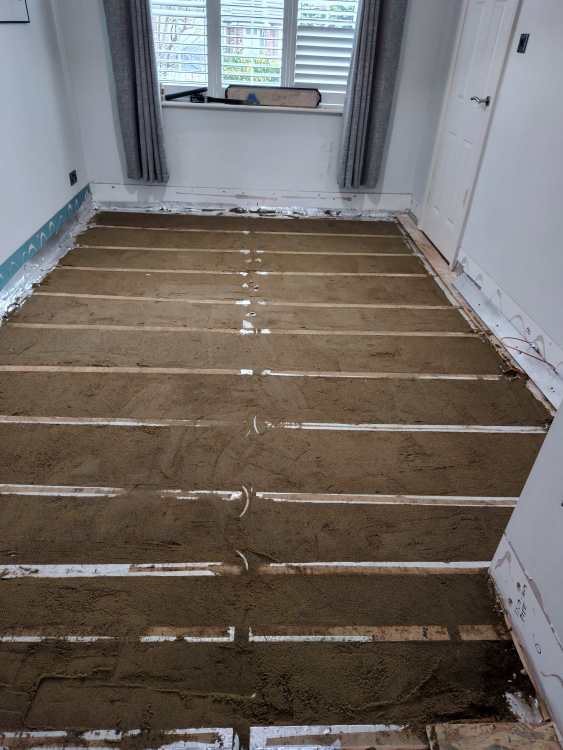
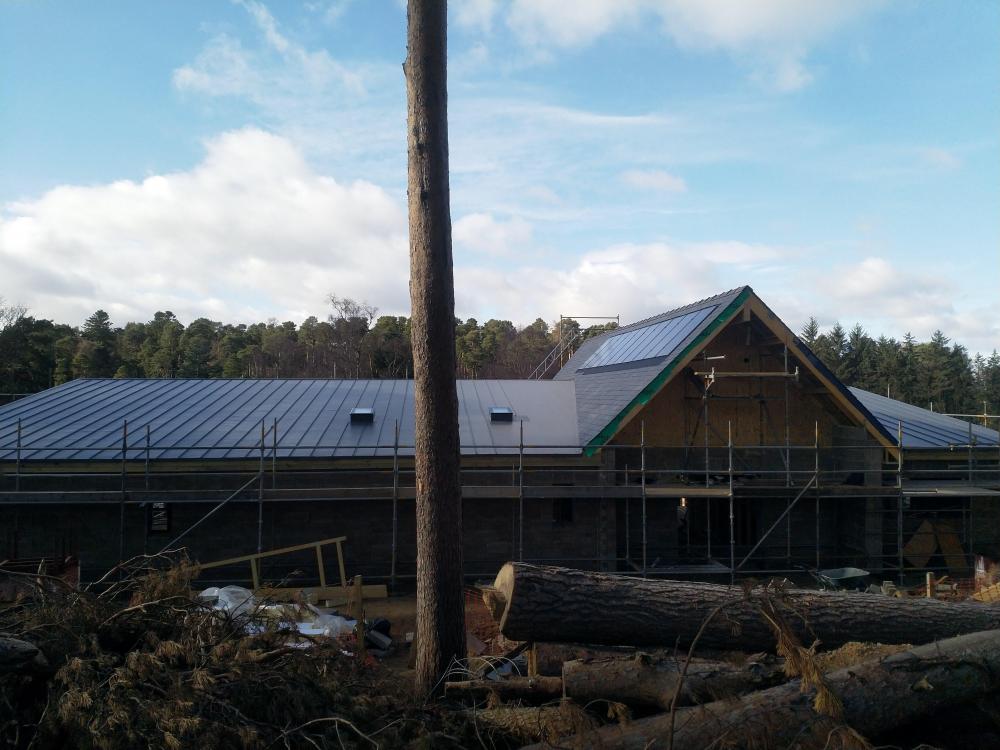
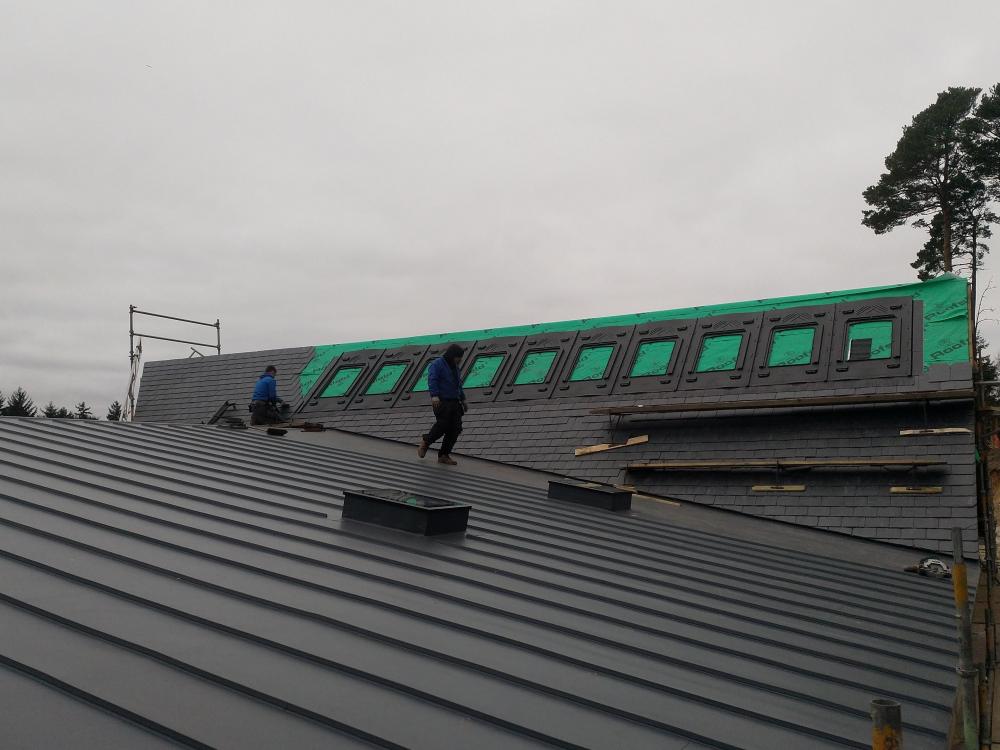


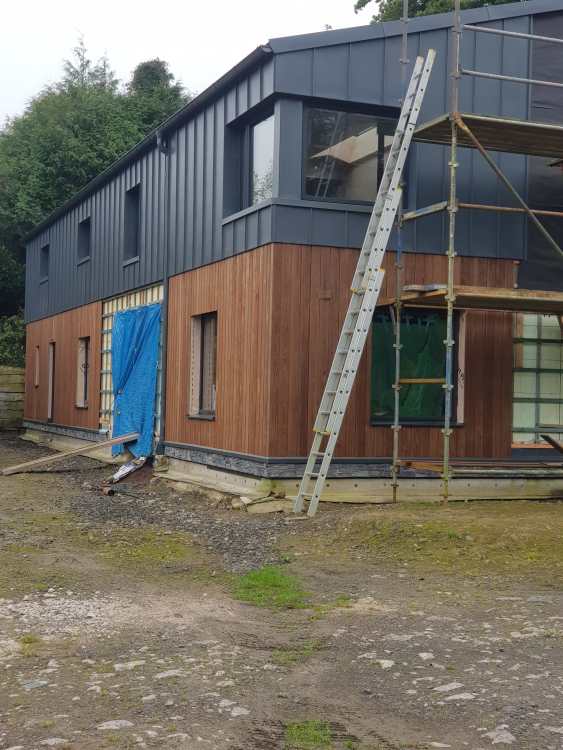


.jpg.c21f3ac78c9b7efd90cbdcb312744dc5.thumb.jpg.7adcad4c0e384f5ecd7d56b0618df6e5.jpg)




